Quick Facts
Location: Hand.
Bone Type: Long bone.
Key Features: Head, body, base, and proximal and distal articular facets.
Articulates With: Proximal and distal phalanges of middle finger.
Arterial Supply: Proper palmar digital arteries.
Key Features & Anatomical Relations
The middle (intermediate) phalanx of the middle finger is one of the fourteen phalangeal bones of the hand. It’s classified as a long bone and includes the following bony features:
- parts: head, body, and base;
- landmarks: proximal and distal articular facets.
More information regarding these bony features can be found in the Parts and Landmarks tabs for this bone.
The middle phalanx is located:
- proximal to the distal phalanx;
- distal to the proximal phalanx.
It articulates with the:
- proximal phalanx at the proximal interphalangeal joint;
- distal phalanx at the distal interphalangeal joint.
Ossification
Ossification of the middle phalanx of middle finger occurs at two ossification centers, these are found in the:
- body, which appears in utero during the third month;
- base, which appears during the second to fourth years.
These ossification centers fuse with each other during the fifteenth to eighteenth years (Standring, 2016).
Surface Anatomy
With regard to surface anatomy, the head, body, and base of the middle phalanx of middle finger can all be easily palpated.
List of Clinical Correlates
- Fracture
- Brachymesophalangia
- Symphalangia
- Thiemann’s disease
References
Standring, S. (2016) Gray's Anatomy: The Anatomical Basis of Clinical Practice. Gray's Anatomy Series 41st edn.: Elsevier Limited.
Learn more about this topic from other Elsevier products
Middle Phalanx

48 Pilon fractures to the middle phalanx are those in which the volar and dorsal margins are disrupted, with comminution of the central articular surface.




